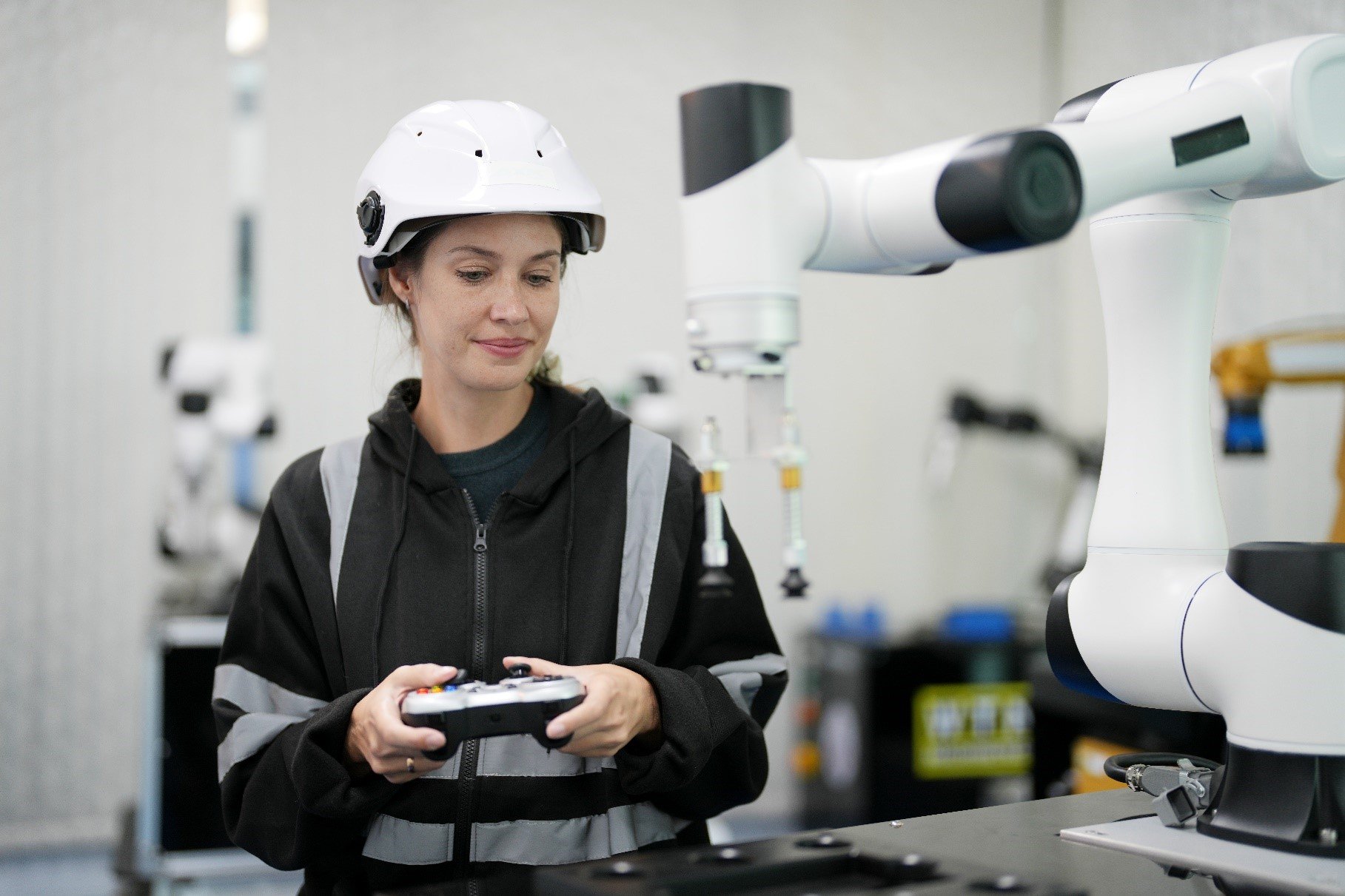Does IoT require edge processing today – and will it in the future?
The Internet of Things industry is growing rapidly, with use cases in smart homes, industry 4.0, autonomous cars and more. Meanwhile, operators’ deployments of edge computing infrastructure are also accelerating. IoT can benefit from edge computing today – below we explore some of the key use cases and requirements for the future.
Internet of Things: what is it and what’s the state of the market?
There are three ways of dividing up types of IoT applications. Each group has distinct purposes and requirements:
Consumer IoT: A connected device, with an interactive app, that provides an additional service to the end user compared with an unconnected version of the device. The additional service is enabled by the insights and data gathered from the device. The key priority for consumer devices is low price point and ease of installation, given most users’ lack of technical expertise.
Enterprise IoT: This includes all the devices and sensors that enterprises are connecting to the internet, e.g. enterprise mobility and fleet tracking. Since every device connected to an enterprise network is a potential point of vulnerability, the primary concern of enterprise IoT is security and device management.
Industrial IoT: This field is born out of industrial protocols such as SCADA, which do not currently connect to the internet but rather to an internal control and monitoring system for manufacturing equipment. More recently, enterprises have enhanced these systems with a host of devices connected to IP networks through Wi-Fi or other technologies, and linked legacy monitoring systems to gateways that feed operational data into more user-friendly, cloud-based monitoring and analytics solutions. The primary goals in IIoT remain to control and monitor, in order to improve operational efficiency and safety, whilst accommodating rising security needs.
Predictions on the global size of the IoT market vary but Statisa states that it is worth almost 250 billion USD today in 2020, and could grow to as large as 1,500 billion USD in 2025. It is, without doubt, a rapidly expanding industry, and one which eclipses edge computing, currently predicted to be around 3 billion USD in size.
To find out more, STL Partners further research on IoT includes:
- Coordinating the care of the elderly
- A new role for telcos in smart cities
- The industrial IoT: What’s the telco opportunity?
Key benefits of edge computing in IOT
Real-time Latency Reduction
Many IoT applications are essentially advanced monitoring systems: they collect data, analyse the data and then trigger actions based on the insights generated. In some cases, this is done on an hourly or daily basis, or only when triggered by a specific interaction with the device. Edge computing can provide a benefit to IoT when these insights are needed in real-time. By providing compute closer to the IoT device, data collection and analytics take place at a physically closer location (i.e. often within the same country or region, perhaps even on the premises, rather than in a large centralised data centre). In doing this, network latency is reduced as the round trip to the data centre and back is shorter. In this way, edge computing can optimise IoT applications that require real-time actions (e.g. cooling systems turned on as soon as a sensitive piece of machinery starts to overheat).
Optimizing Bandwidth Usage
Many IoT devices will send very small packets of data back to a data management platform that runs analytics to derive insights. At the moment, this functions well with data being streamed to a platform running in a centralised (often private) cloud. In the future, with an explosion in the number of connected devices, this may lead to a significant strain on operators’ backhaul network. Even if individual data packets are only a few bytes, when this is being streamed real-time from very many devices in a relatively small geographic area, e.g. a manufacturing plant or a metro centre, the culminative effect could be very large. Edge computing can enable processing and filtering of IoT generated data closer to the devices, optimising bandwidth by ensuring that only data needed for longer term storage or analysis is streamed to a centralised management platform.
Enhancing IoT Security
A major headache for many with the IoT ecosystem is how to manage security as more and more devices are connected. Malware can be used to harness IoT devices to perform DDoS attacks, for example. While edge computing is unlikely to be, in and of itself, more secure than a private cloud, it does have the benefits of being more local. For companies concerned about storing data in locations which, for example, have different data protection laws than where the data is being generated, edge computing can provide some security benefits. Particularly if the edge servers are located on the premises, companies can be sure that data never leaves their own local perimeter and can control all access to the servers storing the information.
IoT edge platforms: the specific requirements of Iot on edge computing
In general, operators are looking to roll out edge computing sites in their network using COTS (common off the shelf) servers without specific hardware for specific applications. While today on-premise edge deployments are generally very bespoke and are deployed and integrated for one specific customer, in the future these deployments will also have to become more standardised.
There are a few IoT-specific requirements that edge providers will have to manage. For example, some IoT applications which require heavy duty AI or data analytics at the edge may have specific hardware requirements, such as servers with GPU capacity. Edge gateways supporting IoT devices will also have to support connectivity for multiple types of device communication such as ZigBee and Bluetooth, as well as connectivity via cellular and Wi-Fi technology.
In addition, operator need to consider the type of IoT platform they are using and how it supports and integrates with their edge infrastructure. Many operators with IoT businesses rely on third party vendor platforms such as PTC ThingWorx and Software AG’s Cumulocity to manage their IoT networks. As demand for edge applications continues to grow, platform vendors are increasingly investing in introducing edge-specific capabilities to their platforms.
What are some examples of IoT use cases that might leverage edge computing?
There are many IoT use cases that are already commercialised and providing benefits across industries today. Some of these may be augmented by edge computing. This includes use cases that require low latency, high bandwidth or local data storage. One example of this is condition based monitoring. Today, remote assets are monitored but this is often difficult and time-consuming, because they may span across vast areas and failures can be disastrous (e.g. oil pipeline explosions, water pipeline leakages). IoT sensors can be used to monitor the conditions of an asset (e.g. temperature, pressure, vibrations etc.) which can alert owners of potential issues and ensure the asset is fixed before failure.
Today, this occurs using connectivity to the centralised cloud. However, edge computing can provide some real benefits. With potential risks on critical systems and safety of those in near proximity, alarms need to be triggered immediately if an anomalous reading is reported. Edge computing means processing of data can occur closer to the location of detection, and doesn’t need to rely on the quality of the network connection.
On top of this, while devices are functioning as intended, raw monitoring data indicates normal behaviour and is not useful. Edge computing means that large volumes of data do not need to be unnecessarily sent to the cloud. For condition-based monitoring, then, edge computing is not required for the use case to be implemented, but can provide some material benefits. Stratus Technologies is one example of how this works in practice today.

Edge computing can unlock some new IoT use cases that do not exist on a commercial scale today. One example of this is automated platooning for truck convoys which is one of the first likely use cases for autonomous vehicles. Here a group of trucks travel close behind one another in a convoy, saving fuel costs and decreasing congestion. In the future, it may be possible to leverage edge computing to remove the need for drivers in all trucks apart from the front one, further reducing costs for transport and logistics companies. The low latency, high bandwidth requirements that come with autonomous control of vehicles mean that adoption of this at scale will likely only be possible with a combination of 5G and edge computing.

Conclusion: does IoT need edge computing now and will it in the future?
IoT today functions across a broad range of use cases without edge computing. But, as more and more devices become connected, and as we explore use cases with even more stringent latency, bandwidth and security requirements, edge computing could become an important enabler.
There remain unknowns and challenges, however, that will determine just how big a role edge computing will play in IoT in the future. These include technical challenges around ensuring physical security of edge infrastructure, when it is likely to be storing data outside of the very secure environment of dedicated data centres. Solving interoperability issues and simplifying device management and control are also technical aspects that many platforms are trying to solve.
The potential pricing models for edge computing are still developing. Access to the edge is likely to be charged at a premium in comparison to a centralised cloud. For IoT applications which may be looking to connect very many devices to the edge, it must provide significant benefits over the cloud to justify its premium price tag.
Read more about edge computing
Edge computing market overview
This 33-page document will provide you with a summary of our insights from our edge computing research and consulting work:
What does IPCEI CIS tell us about the future of edge and cloud in Europe?
We discuss this EU-funded initiative’s pivotal role in advancing interoperability, sustainability, and cybersecurity, as industry giants like Orange, SAP, and Deutsche Telekom collaborate to shape Europe’s tech trajectory.
Accelerating the network: Lessons from Lumen and SK Telecom
STL Partners has conducted extensive research on telcos globally, focusing on their edge computing deployments. STL’s report “Telco network edge computing: Lessons from early movers” delves into the experiences of Lumen, SK Telecom, Telefónica, Verizon, and Vodafone, all of which commercialised edge nodes before 2020. This article highlights key findings and four crucial insights gleaned from these early telco-edge movers.
15 Edge AI Companies: Independent Software Vendors (ISVs) to watch in 2024
STL Partners look at 15 Independent Software Vendors (ISVs) that are using edge computing technology to ensure maximal performance and reliability in their AI models.





